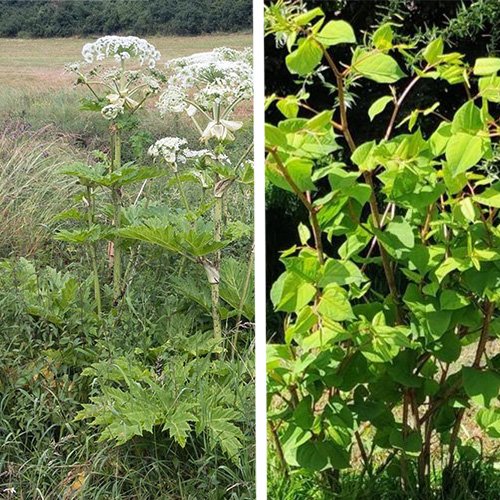Mowing verges and grasslands
The municipality mows flowering roadsides and grasslands in the summer for even more color and life. We mow to keep the vegetation in places from becoming too wild. Sometimes the sheep help. We control exotic weeds such as Japanese knotweed. Mowing in different ways at the right times creates areas with many different flowers and plants. These give the city color, but also attract butterflies and bees. And all those insects, in turn, are good for birds and bats.
Mowing moments
We mow at two times during the year. The first mowing falls between June 21 and July 30. This is when the plants have first produced seed and have the most growth behind them. The second mowing is in the fall between Sept. 1 and Oct. 5.
Diversity
So to get more flowering herbs, we have to mow. But this also removes habitat and food for various animal species. That is why we leave a part of the vegetation at each mowing. Every year it's a different part and so we create patches of herbs of different 'ages'. This is good for diversity. In this way, new flowers, plants and herbs are added all the time and each season provides a healthy habitat with food for birds, butterflies and insects.
More and more space for nature
Heerlen also has many lawns that we mow more often than twice a year. This is necessary, for example, because children play there or for traffic safety. Here we just keep mowing more often. If it suits their function, we increasingly transform intensively mowed lawns into places with many different flowers, plants and herbs. Nature gets more and more space in our city and we make Heerlen a city full of color and life.
Report of exotic weedy plants
Japanese knotweed and giant hogweed are exotic weedy plants. Due to their rapid growth, the plants cause a lot of nuisance. The municipality tries to control the exotic plants as much as possible. Reports of locations of these plants can help us.
Japanese knotweed
Japanese knotweed displaces existing plants, can grow through cracks in foundations and break through asphalt. The plant is difficult to control because of its long and deep roots. Each piece of knotweed can grow back into a full-sized plant.
The giant hogweed
The giant hogweed is poisonous and causes burns when touched. The municipality therefore controls the plant in places where people can come into contact with it, such as along paths and at playgrounds. Control of the plant runs over several years.
Both plants are difficult to control. If you want to control giant hogweed yourself, use protective clothing. Also protect your eyes.

These locations are already known to the community:
More information on these plants can be found on the Knowledge Network invasive exotics website and the Probos Foundation website.
Sheep herds keep the grass short
Instead of lawnmowers, the municipality of Heerlen is using sheep to keep the grass short in verges and green areas in the city. Nature-friendly and quiet. You can encounter them from April in many places in the city, for example in the Heidserpark, Zeswegen or the Aambos.
Did you know that in green spaces kept short by sheep, more flowers bloom? That's because sheep selectively graze. The seeds have more chance to germinate.
The flocks with their shepherd and sheepdog add rural charm to our town and they also make less noise than a reaper. The sheep are all healthy and vaccinated against Q fever. To be on the safe side, we recommend that people with reduced immunity not touch the sheep.